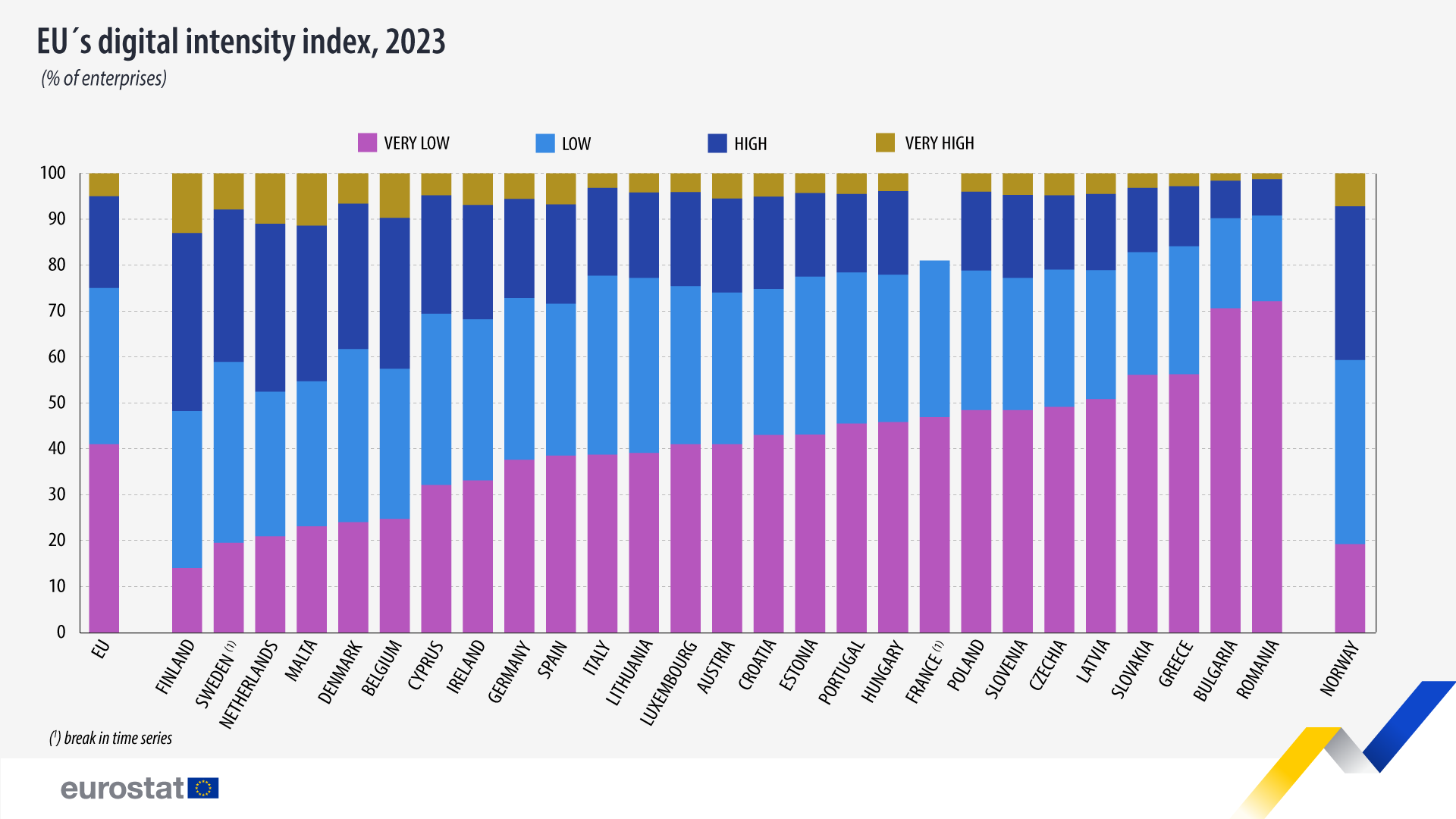In 2023, 59% of EU enterprises reached at least basic level of digital intensity. Of the small and medium-sized enterprises (SMEs), 58% reached at least basic level of digital intensity last year, while the share for large enterprises was 91%.
‘At least basic level of digital intensity’ – measured by the Digital Intensity Index (DII) – entails the use of at least 4 of 12 selected digital technologies, such as AI technology, social media, cloud computing, Customer Relationship Management (CRM) or having e-commerce sales accounting for at least 1% of total turnover.
Source dataset: isoc_e_dii
At least basic level includes businesses with a low, high and very high level of the Digital Intensity Index (DII), excluding the very low level.
According to one of the targets of the Digital Decade, more than 90% of EU SMEs should reach at least a basic level of digital intensity by 2030. This means that last year, the SMEs in the EU were 32 percentage points (pp) away from the ambition set for 2030 in the Digital Decade.
4.4% of EU SMEs reached a very high level of digital intensity while 19.6% reached a high level. Most SMEs recorded low (33.8%) or very low (42.3%) digital intensity levels.

Source dataset: isoc_e_dii
The biggest proportion of enterprises reaching a very high level of the DII was in Finland (13.0%), Malta (11.4%) and the Netherlands (11.0%).
Meanwhile, the countries with the most enterprises characterised by a very low digital intensity were Romania (72.1%), Bulgaria (70.6%) and Greece (56.2%).




